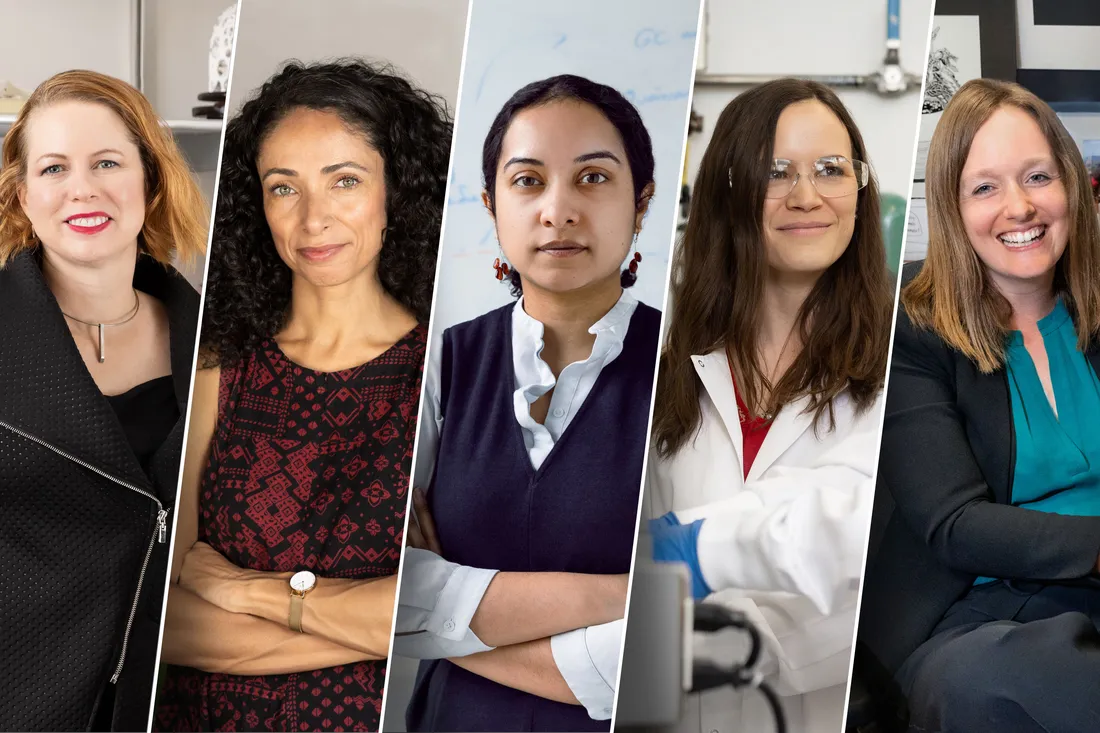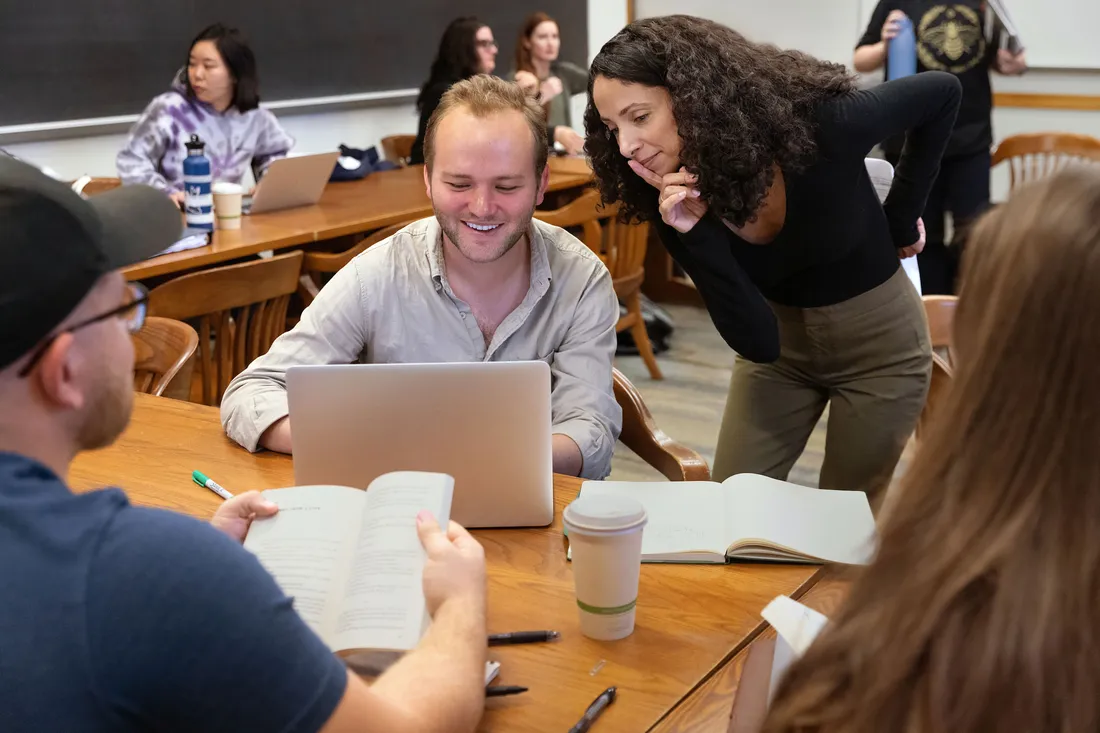
Esteemed faculty across disciplines are exploring today’s pressing issues. At Syracuse University, you’ll learn from—and conduct research or work with—faculty who are pushing the limits of innovation. During Women’s History Month, learn about just a few of the women working with students to change the world.
Amber Bartosh Builds in the Virtual World To Create Better Buildings in This One

Bartosh’s research focuses on how immersive infrastructure—where computer-generated elements interact with real-world elements—can be used to change architectural practice.
Architecture professor Amber Bartosh is designing the future of construction and design. Using extended reality (XR) technologies, she explores how experiencing spaces virtually can reshape architectural practices. Architecture is at the precipice of a paradigm shift, says Bartosh, and she and her students are pushing the boundaries on new ways to build more sustainably and creatively.
XR allows students to visit global architectural landmarks without leaving campus, or to test their building designs at full-scale without the cost of fabrication.
Professor Amber Bartosh
Chanelle Benz Pushes Back Against Master Narratives About Race and Identity

Benz’s bestselling novel, The Gone Dead, is an unflinching look at race, justice and memory in the Mississippi Delta.
Award-winning novelist and professor Chanelle Benz G’12, a graduate of Syracuse University’s top-ranked creative writing program, encourages her students to explore perspectives that run counter to master narratives, especially those which engage with issues of gender, place and race. “Being receptive to different ideas and perspectives makes us more inventive and inspired,” she says.
I’m not so much concerned about characters winning or losing as I am with giving them voice.
Professor Chanelle Benz G’12
Tripti Bhattacharya Studies the Past To Predict the Future of Climate Change

Bhattacharya’s research combines explorations of past climates with atmospheric science.
Tripti Bhattacharya is a climate scientist who studies past global patterns of large-scale climate to understand and predict future climate change. Working with molecular fossils and computer models, Bhattacharya engages in interdisciplinary research to understand how rainfall responds to global climate change. Her lab produces insights that have garnered international recognition and could inform how we address climate change.
Our climate models agree in large part about what will happen globally, but regionally there are a lot of disagreements, especially what rainfall will look like in the future.”
Professor Tripti Bhattacharya
Mary Beth Monroe is Poised To Transform Medical Treatment of Damaged Tissues

In addition to pioneering medical materials, Monroe is a staunch advocate for diversity and inclusivity in STEM.
“Everything I do has a medical application,” says Mary Beth Monroe, a biomedical and chemical engineering professor who is creating safe, nonsurgical alternatives for treating torn tissues and organs. The materials she is developing could transform how wounds are treated in civilian and military contexts.
There’s big demand for nonsurgical treatment options because they’re less painful. These options also can help patients recover faster and cut down chances of recurrence.
Professor Mary Beth Monroe
Nicole Fonger Makes Math Relevant to Racial and Environmental Justice

Fonger is committed to challenging inequities designed into our society, including in the mathematics classroom.
Math and math education professor Nicole Fonger pairs instruction with social justice objectives to improve educational equity. As a community-engaged scholar, Fonger partners with local schools and closely links her research with practice. Through initiatives such as the Antiracist Algebra Coalition, she works with teachers and community members for racial justice in mathematics education and outcomes.
The teachers and coaches I collaborate with have been teaching and designing lessons at the intersection of social justice and mathematics, where we’re interrogating social issues through a mathematical lens.
Professor Nicole Fonger


